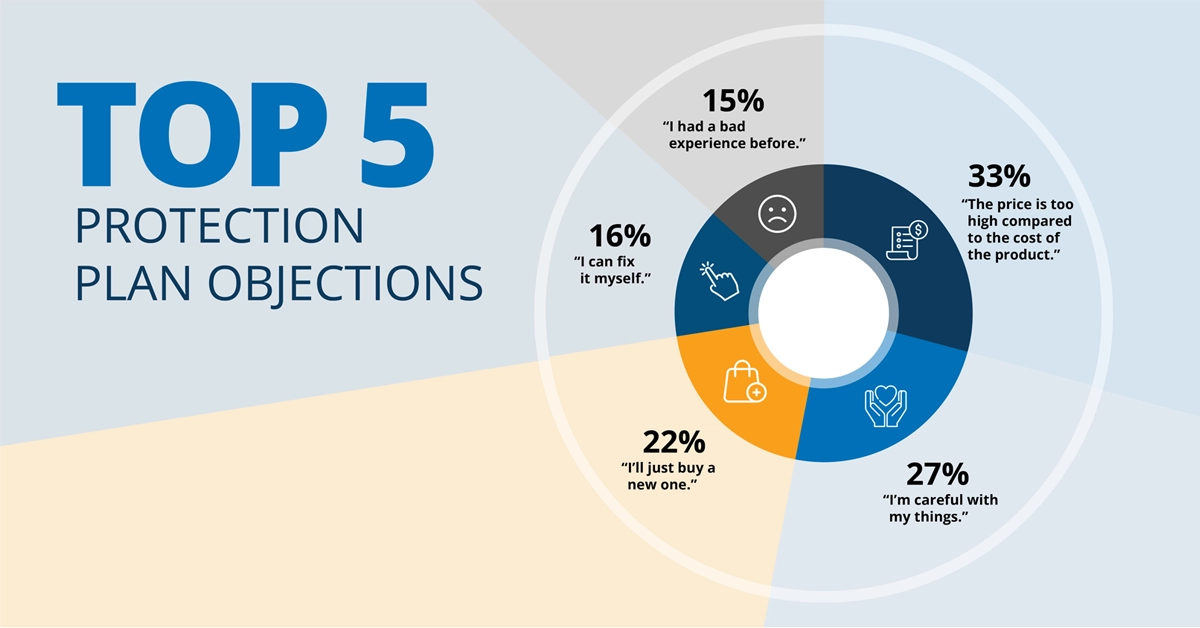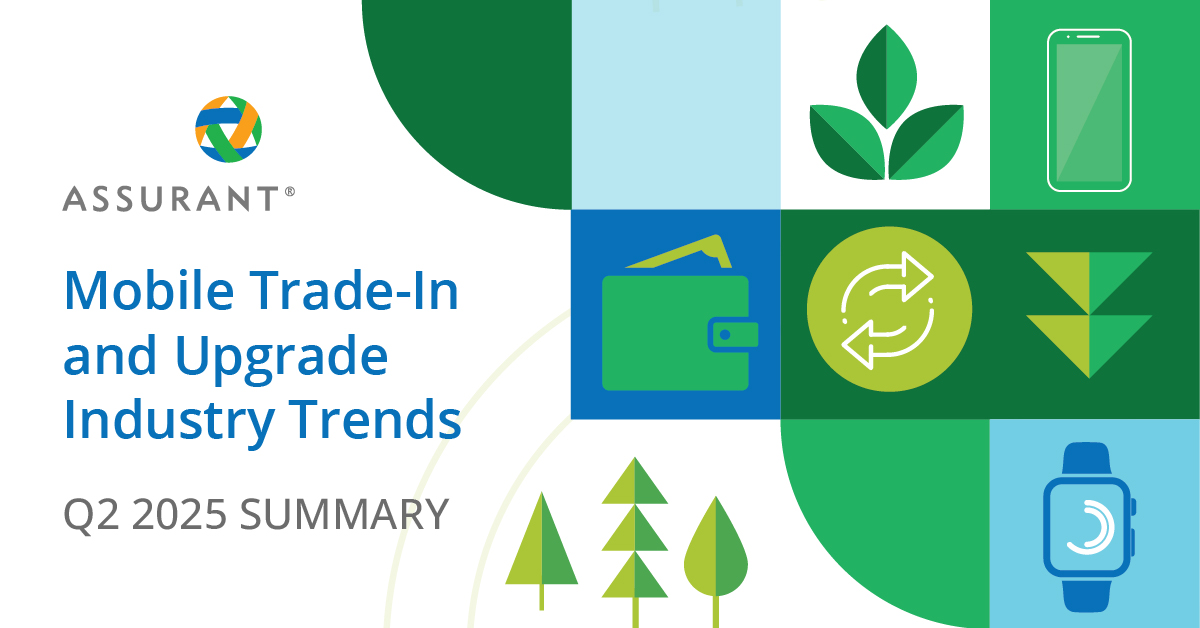Want to sell more protection plans? Start by understanding what really drives customer decisions.
Protection plans aren’t just an upsell — they’re a powerful way to build trust, boost attach rates, and help customers protect the products they rely on every day. But what happens when a shopper says “no” to an extended warranty?
This guide dives into the top customer objections to extended service contracts, backed by insights from over 3,200 U.S. consumers who purchased ESC-eligible products from major retailers. Whether you're a retail associate, sales trainer, or frontline leader, you'll find actionable strategies to overcome resistance, reframe value, and close more confidently.
Objection 1: “The price is too high compared to the cost of the product.”
What the customer really means
“I don’t see the value. This feels like an unnecessary add-on.”
Data insight
This is the No. 1 reason consumers decline protection plans. It reflects a perceived mismatch between product price and plan cost, especially for lower-priced items.
Your winning strategy for selling product protection plans
- Reframe protection as value preservation, not a surcharge.
- Anchor the plan’s price to repair/replacement costs, not the product.
- Highlight tiered pricing and subscription options (52% of consumers prefer subscriptions over one-time payments).
Example script for retail sales objection handling
"If a part fails after the warranty, a single repair visit could cost $300 to $500. This plan covers that for a fraction of the cost with no surprise bills."
Objection 2: “I’m careful with my things.”
What the customer really means
“I trust myself, but I’m not thinking about what’s out of my control.”
Data insight
This is the second most common objection. But, interestingly, 38% of buyers said they purchased a plan because they feared the product might break after the factory warranty, and 34% cited accidental damage, suggesting that even careful owners recognize risks beyond their control.
Winning strategies
- Normalize caution but reframe risk: “It’s not about how you treat the product. It’s about what can still go wrong.”
- Reference power surges, hidden defects, and wear-and-tear — all top reasons people buy plans.
Example script
"Even high-end brands can fail from power surges or internal defects. This plan covers the stuff you can’t see coming."
Objection 3: “I’ll just buy a new one.”
What the customer really means
“I think replacement is cheaper and easier than repair.”
Data insight
This mindset is common, but the study shows that higher-priced items have significantly higher protection plan attach rates — up to 1.7x more likely than lower-priced items in the same category. This suggests that, when customers understand the full cost of replacement, they’re more likely to opt for protection.
Winning strategies
- Help them map the full cost of replacement: delivery, setup, downtime.
- Emphasize convenience and continuity, especially for tools or appliances critical to daily life.
Example script
"Replacing this tool might cost more than just the price tag. Think lost time, missed work, and setup. This plan keeps you working without interruption."
Objection 4: “I can fix it myself.”
What the customer really means
“I’m confident in my skills, but I haven’t considered the hidden costs.”
Data insight
DIY confidence is real, but power tools had the lowest attach rate (2%), despite being among the most frequently purchased categories. This gap suggests a missed opportunity to position plans as a time-saving, warranty-safe alternative to DIY repairs.
Winning strategies
- Validate their self-reliance.
- Position protection as a backup plan and time-saver.
- Mention OEM parts access and warranty-safe repairs.
Example script
"You might be able to fix it, but we get OEM parts faster and cheaper, and labor is included. Plus, there’s no risk of voiding the warranty."
Objection 5: “I had a bad experience before.”
What the customer really means
“I’ve been burned. I need proof this is different.”
Data insight
While 15% of decliners cited past negative experiences, 62% of consumers overall said they’re more likely to buy from brands that offer protection plans, indicating that trust can be rebuilt with the right offer and experience.
Winning strategies
- Lead with empathy.
- Rebuild trust with metrics (e.g., Assurant approves 99% of claims in seconds).
- Highlight modern improvements: faster claims, real-time tracking, and human support.
Example script
"Totally get that. This plan is different. 99% of claims are approved within seconds, and you can track everything online with real support if you need it."
Mastering how to sell protection plans is key to overcoming sales objections and driving retail attach rate improvement. Every objection is an opportunity to build trust and boost your extended service contract sales.
Whether you're new to selling protection plans or looking to improve your attach rate, these strategies will help you close more confidently.






